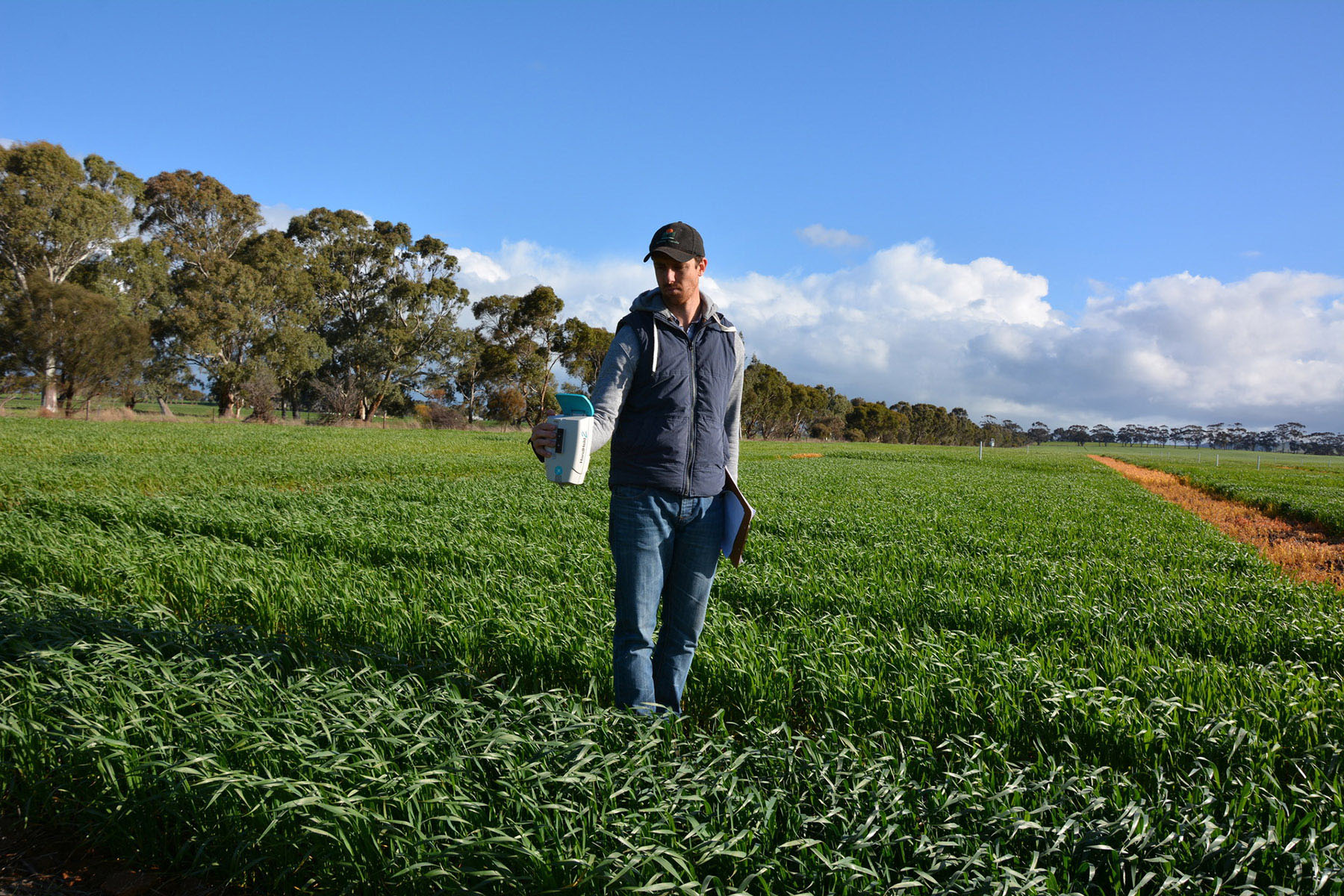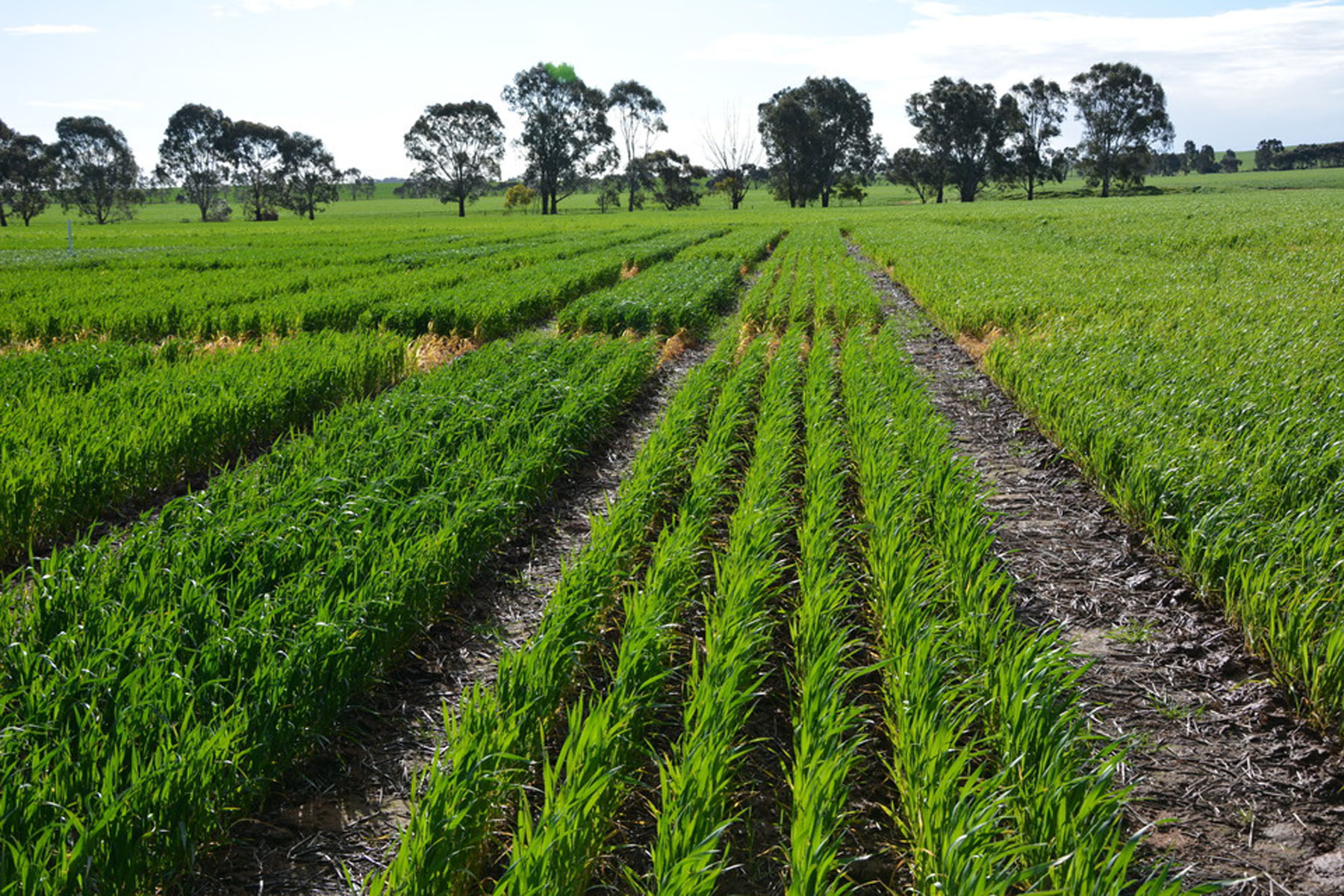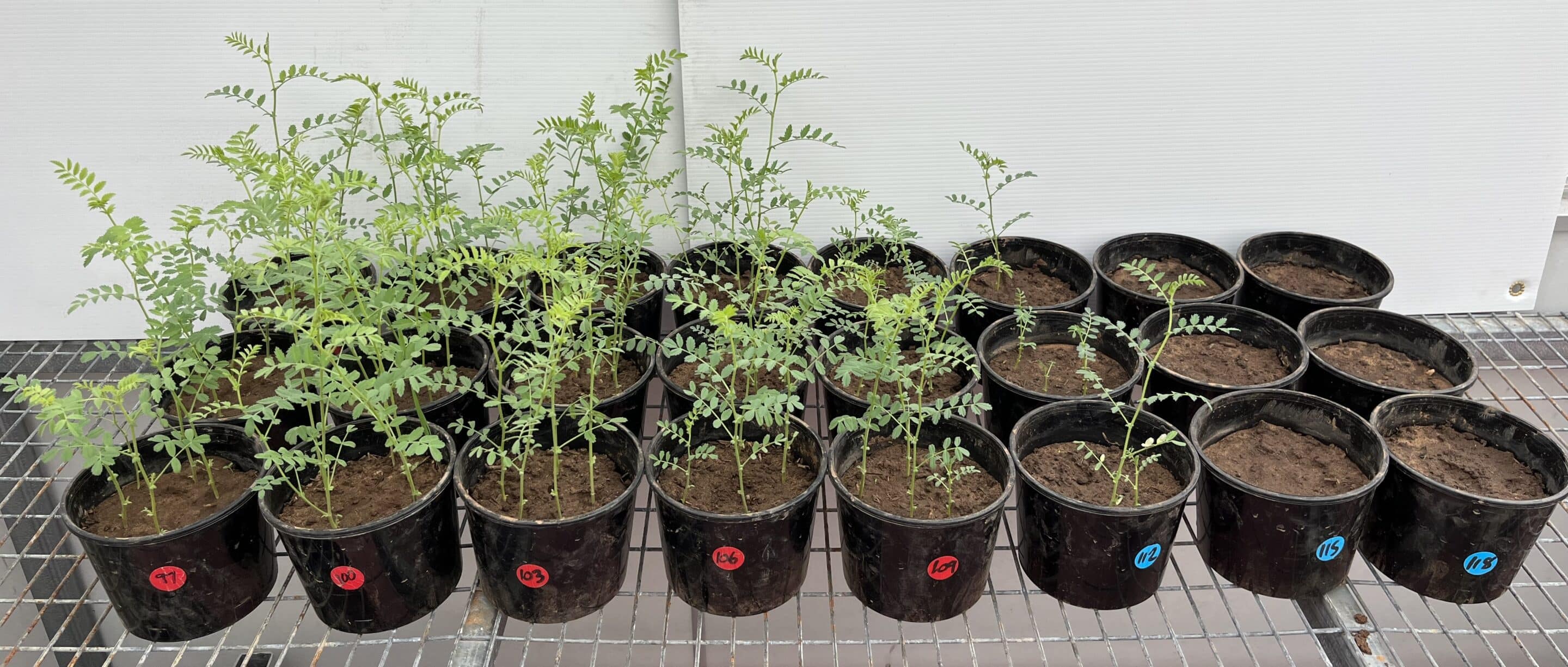START
FINISH

Summary
This project investigated the capability of field-based near infra-red (NIR) in providing non-destructive, real-time results for plant nitrogen content (N%) and water-soluble carbohydrates (WSC).
Data obtained from spectral reflectance measured in the field could successfully predict N% but the accuracy was not adequate enough to be directly substituted for lab-based testing. The result was suitable though for large scale plot screening or whole paddock mapping of N concentration. WSC could not be accurately predicted in the field using the same procedures to provide accurate information on crop WSC reserves for grain fill.
Background
Lab-based methods of measuring plant N% and WSC rely on destructive plant tissue samples from the field, which have to be dried and prepared for lab analysis, a time-consuming process which could be improved by implementing a field-based, real time measuring method.
The ability to have measurements conducted in the field and in real time would allow many more measurements to be taken and provide more information across the entire paddock, rather than the current practice of targeting a single tissue test in specific zones.
Research Aims
The core objectives of the project were to:
• Use new field-based whole NIR spectrum technology to determine plant total WSC and N% of wheat and barley in the field.
• Establish calibration curves to enable the use of new field-based NIR devices to predict WSC and N%, rather than conventional lab-based testing procedures.
• Enable rapid, in-season crop monitoring of WSC and N% through the successful calibrations of field-based whole NIR devices.
• Use the measurements to provide an important in-season crop health status for grain growers and a useful phenotyping tool for plant breeders.
In The Field
More than 1500 plant samples were taken and analysed for N content and WSC in conjunction with non-destructive field-based NIR spectroscopy and lab-based NIR spectroscopy over two years.
These samples represented wheat and barley across multiple growth stages in a range of environments at Roseworthy, Mintaro and Loxton and differing N management strategies, in order to produce a set of data covering a wide range of conditions.
Plots were also sampled from differing crop row spacings from 9-inch to 12-inch to investigate any associated impact of varying ground cover that may influence the field-based NIR readings.
Results
Findings to stem from this project include:
• Successful calibration for predicting total N content from field and lab-based NIR devices in wheat and barley.
• Accurate and robust predictive NIR calibrations enable a single calibration to be applicable to both wheat and barley.
• Predictive NIR model for N content is consistent across seasons and contrasting environments.
• WSC calibrations were successful but predictive accuracy was found to be low.
An accurate and robust calibration model was created that has the potential to be used by growers to manage N inputs more accurately than using current N sensors allows.
The only barrier to this is the development of a suitable technology platform which would make this technology accessible to growers.
An NIR device with predictive N models built-in or a sensor with a cloud-based data platform which returns raw NIR data with N content outputs are two potential options for a path to market.
Project Participants
The University of Adelaide: Michael Zerner; Agronomy Solutions: Sean Mason
SARDI: Kenton Porker
CQ University: Daniel Cozzolino
The Problem
Current standard methods to measure water soluble carbohydrates and nitrogen content rely on taking destructive plant tissue samples from the field.
The research
Improving the ease of measurement of plant trait components, water soluble carbohydrates and nitrogen content through use of non-destructive, real-time measurements carried out by a handheld device.
More information
Michael Zerner
M: 0439 802 600
E: [email protected]
Value for Growers
Findings of this project will represent a large technological advancement in crop phenotyping and diagnostics.
Although WSC predictions were not as accurate as anticipated, N% was found to be accurate and robust, and the development of technology utilising these predictions could improve nitrogen management efficiencies.
The results of the project have been presented to a wide range of audiences at a SAGIT annual update, an MSF field day at Loxton, a National Frost Initiative annual meeting, an Australian Barley Breeders meeting and the 2019 Adelaide and Maitland GRDC Updates.
The project also received coverage in the Stock Journal and a small set of results were published and presented at an Australian Agronomy Conference at Ballarat by Sean Mason.




